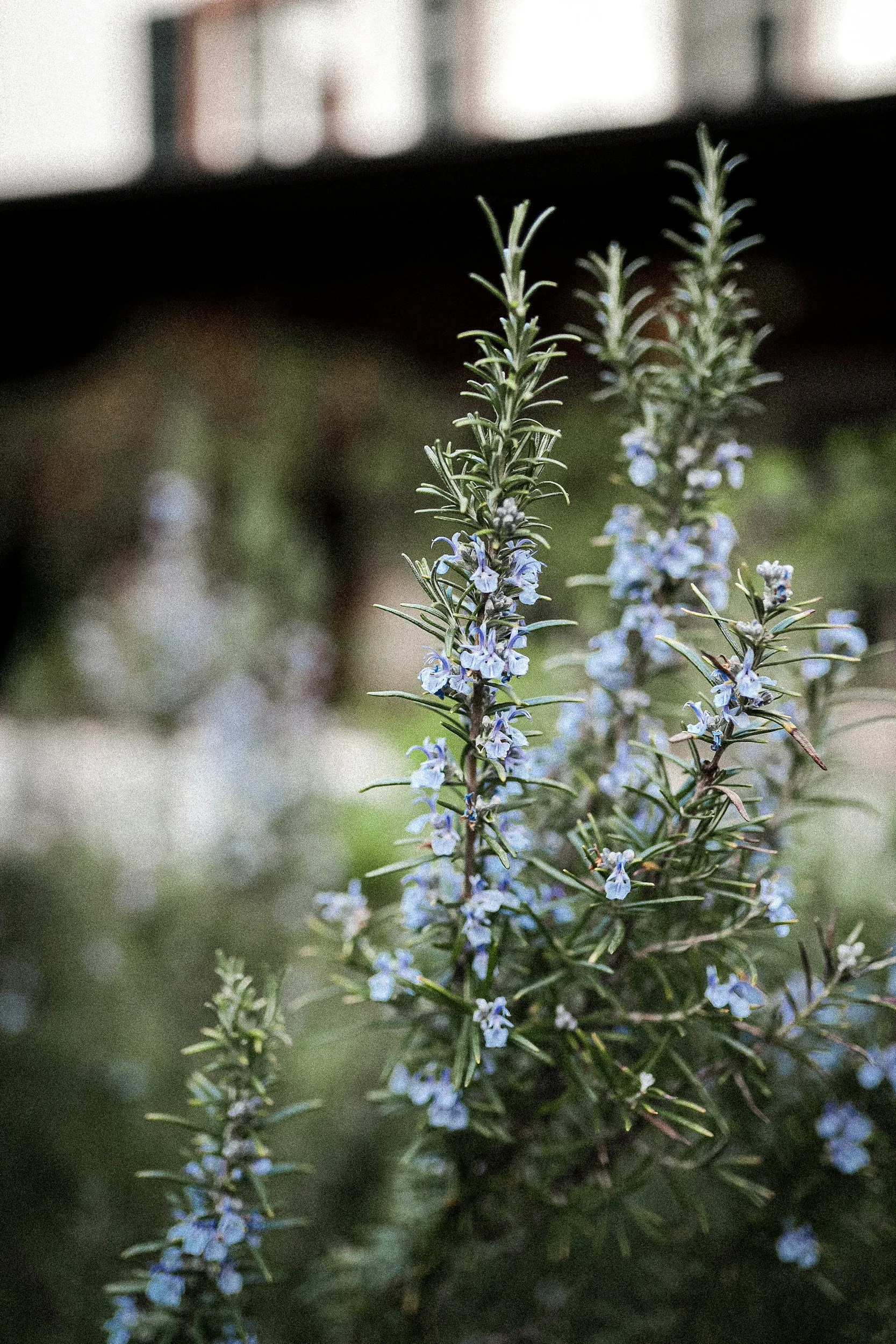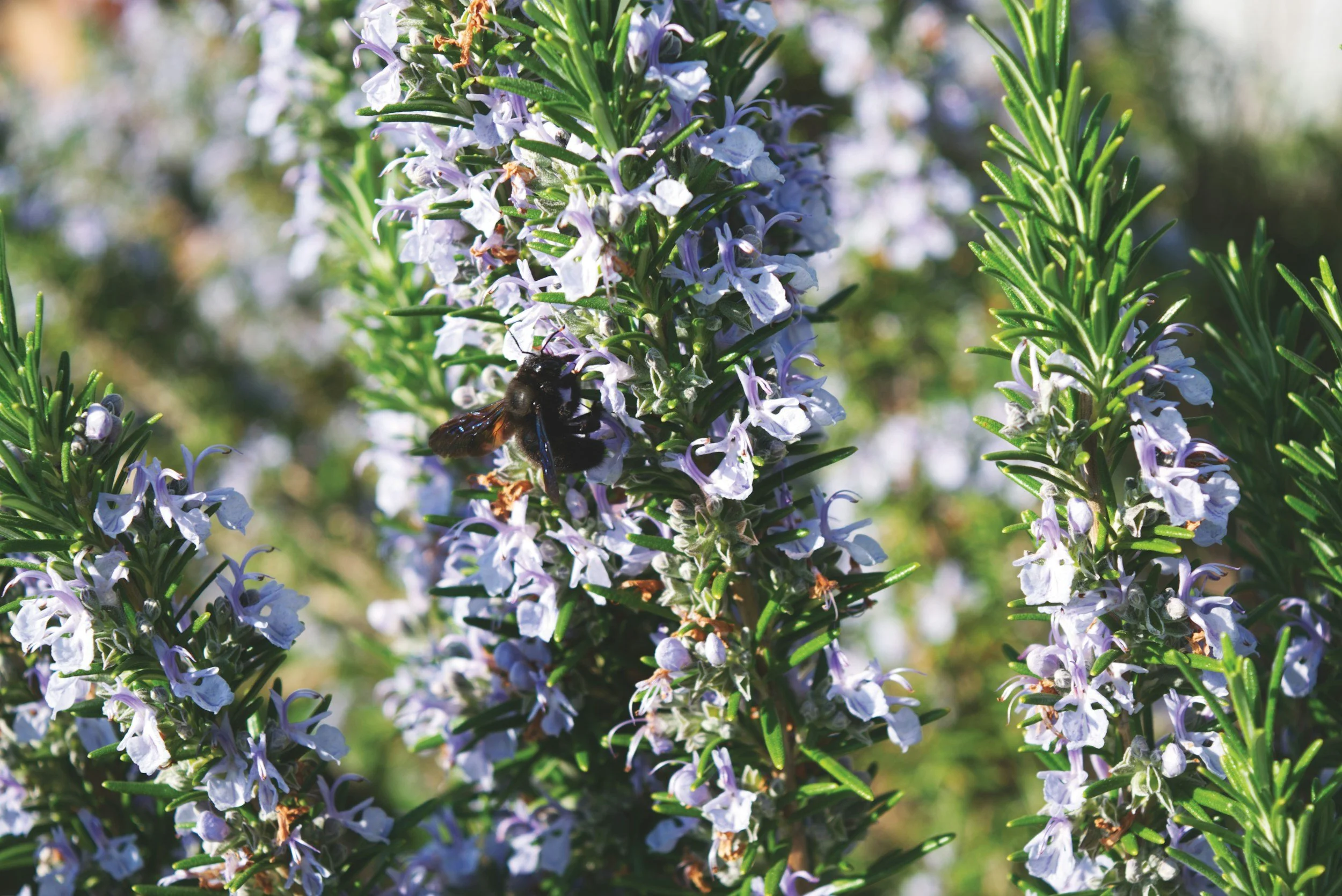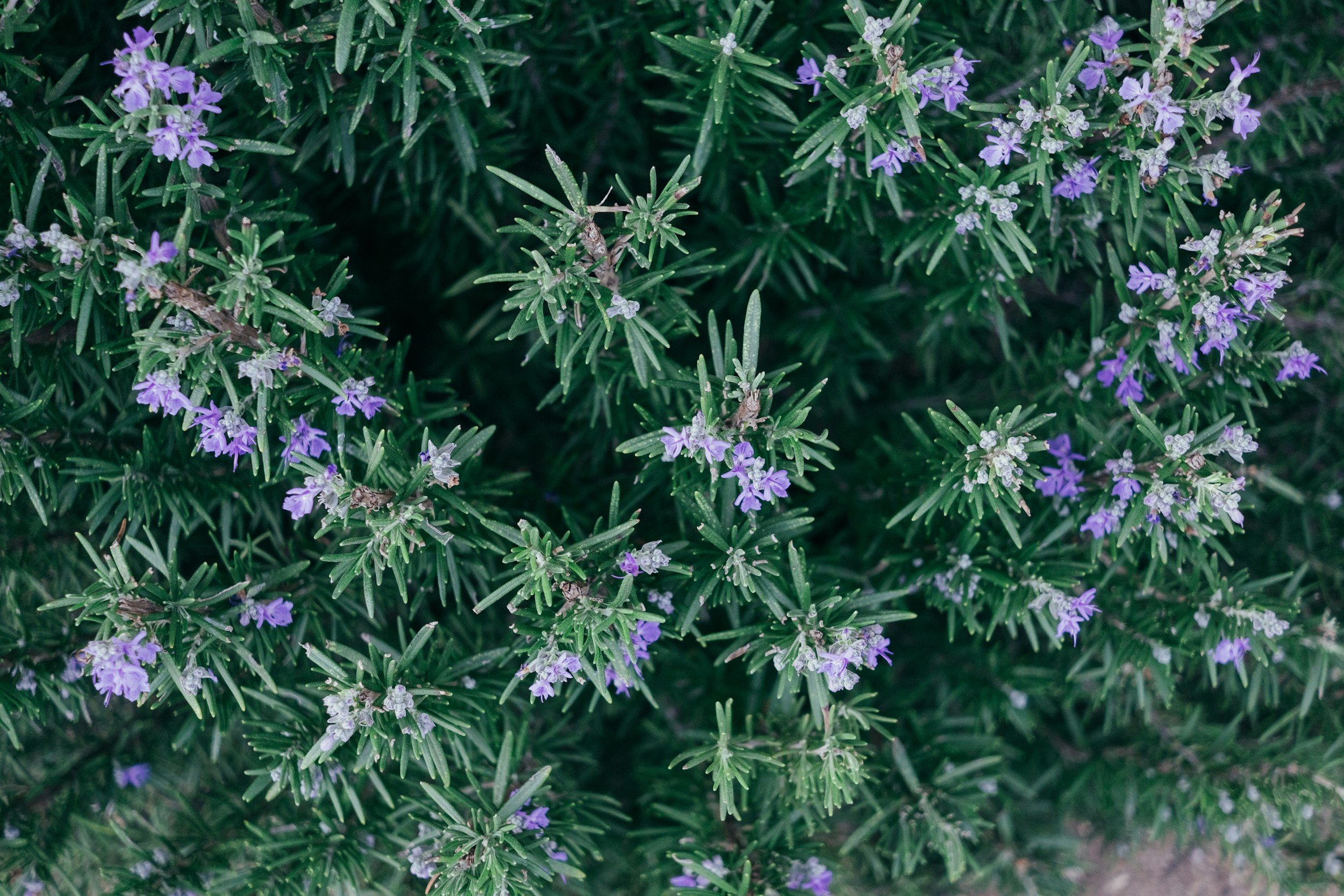
Rosemary
Rosemary
(Salvia rosmarinus)
Plant family:
Lamiaceae
Parts used:
Flowering Herba
Typical forms of prescription
Infusions
Tinctures
Essential oils (external use)
Rosemary (Salvia rosmarinus) – Clinical Snapshot
Primary Actions
Anti-inflammatory
Bitter tonic
Diaphoretic
Antiseptic
Antioxidant
Antispasmodic
Stimulating nervine
Carminative
Astringent
Antimicrobial
Aromatic
Mildly rubefacient
Primary Indications
Circulatory & Cognitive Support:
Poor circulation (especially cold hands and feet)
Peripheral circulation boosting
Poor memory
Varicose veins
Alopecia & poor hair growth
Digestive & Nervous System:
Dyspepsia
Digestive headaches
Nervous tension
Headaches & migraines
Musculoskeletal (Topical Use):
Sciatica
Back pain
Joint pain
⚠️Cautions / Safety⚠️
Not for use in medicinal quantities during pregnancy
Avoid in epilepsy (due to camphor content)
Use caution with Warfarin
Saliva Rosmarinus
Phytochemistry and Pharmacology
Volatile Oils
Includes: 1,8-cineole (eucalyptol), camphor, alpha-pinene, borneol
Action: Stimulant, carminative, antimicrobial, expectorant
Use: Rosemary’s essential oils make it a powerful aromatic stimulant. They enhance cerebral circulation, support memory and focus, and provide antimicrobial and mucolytic activity for respiratory infections. Camphor and cineole are also warming and circulatory-activating, ideal for cold extremities or muscle tension.
Phenolic Acids
Includes: Rosmarinic acid, caffeic acid
Action: Antioxidant, anti-inflammatory, hepatoprotective
Use: These compounds protect against oxidative stress, support liver detoxification, and reduce chronic inflammation. Rosmarinic acid is especially useful in allergic conditions, autoimmune support, and gut-liver axis health.
Flavonoids
Includes: Apigenin, luteolin
Action: Antioxidant, vascular tonic, antispasmodic
Use: These flavonoids help support capillary health, reduce inflammation, and calm digestive spasms. They also contribute to rosemary’s traditional use for menstrual cramps and mild cardiovascular support.
Diterpenes
Includes: Carnosol, carnosic acid
Action: Antioxidant, anticancer, neuroprotective
Use: These compounds have been studied for their role in protecting brain tissue, enhancing detoxification enzymes, and providing cell-protective effects. They’re thought to underlie rosemary’s traditional use for memory support, especially in cases of mental fatigue or age-related cognitive decline.
Triterpenes
Includes: Ursolic acid, oleanolic acid
Action: Anti-inflammatory, tissue regenerative, antimicrobial
Use: These support skin healing, liver health, and inflammatory modulation, useful in topical wound care, acne, or chronic inflammatory states.
Traditional use
Rosemary has a long-standing reputation in folk medicine and culture. Traditionally infused in wine for weak hearts, it was also used to stimulate memory and focus. Symbolically, rosemary appears throughout literature, art, and ritual as a sign of remembrance, fidelity, and mourning—Shakespeare notably referenced it in Hamlet. As a culinary herb, it was favoured for flavour and its digestive-supporting properties, especially for rich or fatty meals.
Clinical discussion
Rosemary is a herb used by herbalists when poor peripheral circulation is an issue. This could be in the form of cold hands and feet or poor leg circulation leading to varicose veins. The head is included in the peripherals, and rosemary has been used internally to improve headaches, boost memory and encourage poor hair growth. It is also used topically as a decoction or diluted essential oil to enhance hair growth. The essential oil is warming and can be used diluted in rubs to improve sore muscles and joints. As a member of the mint family, its use as a culinary herb flags its use for settling digestion, especially if flatulent.
Cultivation/harvesting
Rosemary is a hardy, evergreen Mediterranean shrub that thrives in full sun and well-drained, sandy, or loamy soil. Once established, it is drought-tolerant and dislikes soggy conditions.
Harvest leafy stems in mid to late summer, preferably on hot, dry days when the plant is in full flower, as this is when its volatile oil content is highest.
Cut only the upper tender growth, avoiding woody stems unless pruning.
Dry sprigs gently in the shade, then strip leaves for storage in airtight containers.
It can be propagated by semi-hardwood cuttings or from seed (though germination may be slow and variable).
Key Botanical Features of Rosemary (Salvia rosmarinus)
Formerly known as Rosmarinus officinalis, rosemary is now classified as Salvia rosmarinus, a woody, aromatic evergreen shrub in the Lamiaceae (mint) family. It’s highly valued for its culinary, medicinal, and ornamental uses, and known for its needle-like leaves and fragrant, blue flowers.
Growth Habit
Type: Evergreen perennial shrub.
Size: Grows 1–2 meters (3–6.5 feet) tall.
Form: Bushy and upright, but can become sprawling or trailing in some varieties.
Stem: Woody at the base, green and soft when young, becoming brown and fibrous with age.
Leaves
Type: Simple, linear, needle-like.
Size: About 2–4 cm (0.8–1.6 inches) long.
Margins: Entire (smooth), slightly rolled under (revolute).
Surface:
Upper side: Dark green and leathery.
Underside: Silvery-white and hairy.
Aroma: Strong, pungent, resinous scent, rich in essential oils like cineole and camphor.
Flowers
Type: Small, two-lipped (bilabiate), typical of the mint family.
Colour: Usually pale blue to violet, but some cultivars have white or pink flowers.
Size: About 1–1.5 cm (0.4–0.6 inches) long.
Arrangement: Clusters in the leaf axils along the upper stems.
Blooming Period: Late winter to spring, and can re-bloom in autumn in mild climates.
Pollination: Attracts bees, butterflies, and other pollinators.
Fruits & Seeds
Fruit Type: Nutlets, though rarely seen in cultivated plants.
Reproduction: Primarily propagated via cuttings due to low seed viability.
Roots
Type: Fibrous root system, shallow but spreading.
Function: Anchors well in dry, rocky soils; tolerant of drought once established.
Habitat & Growth Conditions
Climate: Native to the Mediterranean region, thrives in warm, dry climates.
Soil: Prefers well-drained, sandy or rocky soils, low fertility.
Sunlight: Requires full sun (at least 6–8 hours/day).
Water Requirements: Low; prefers dry conditions once established.
Distribution: Widely cultivated globally for culinary and medicinal use.
Sustainability/conservation
Cultivated widely.
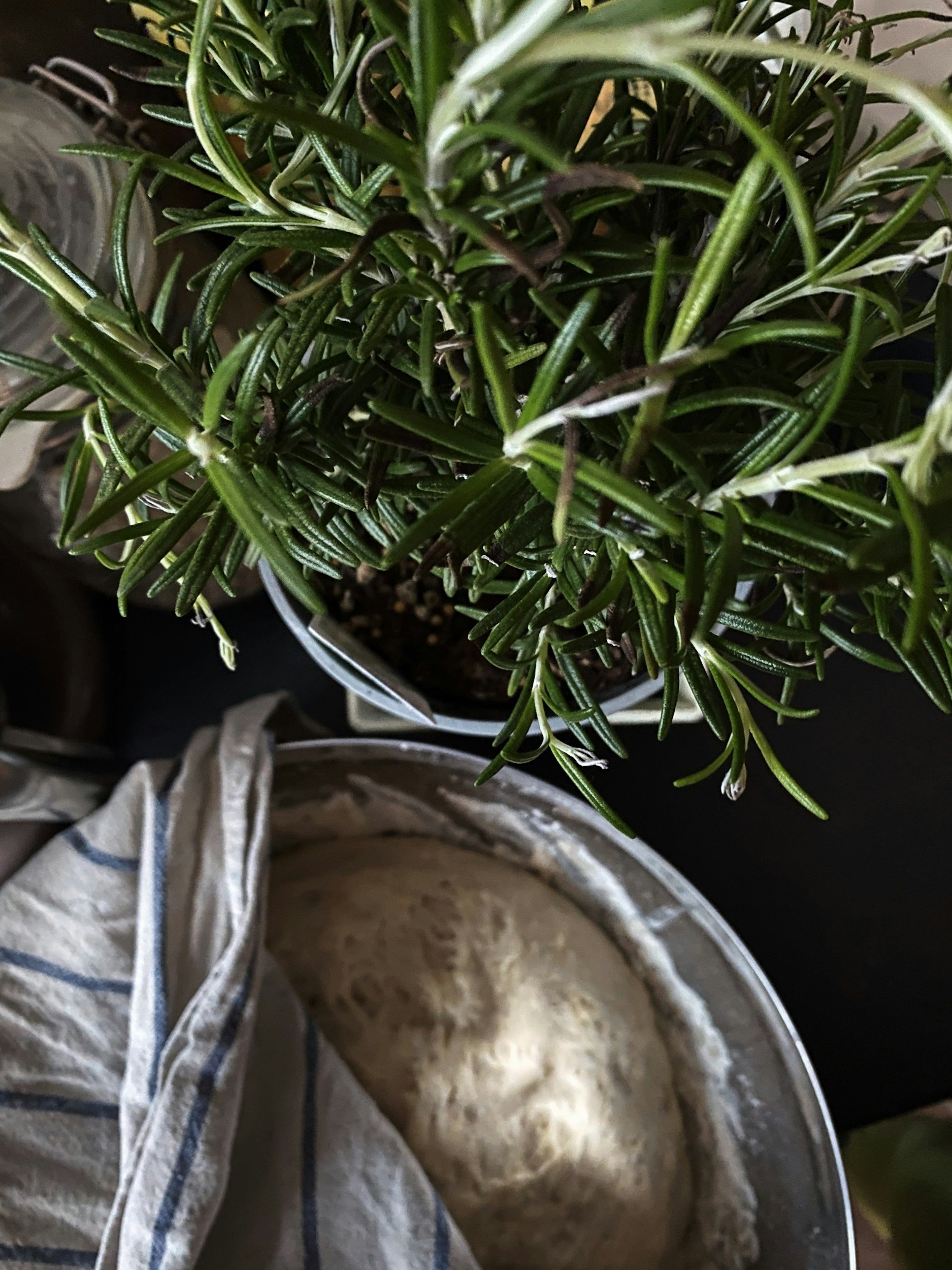
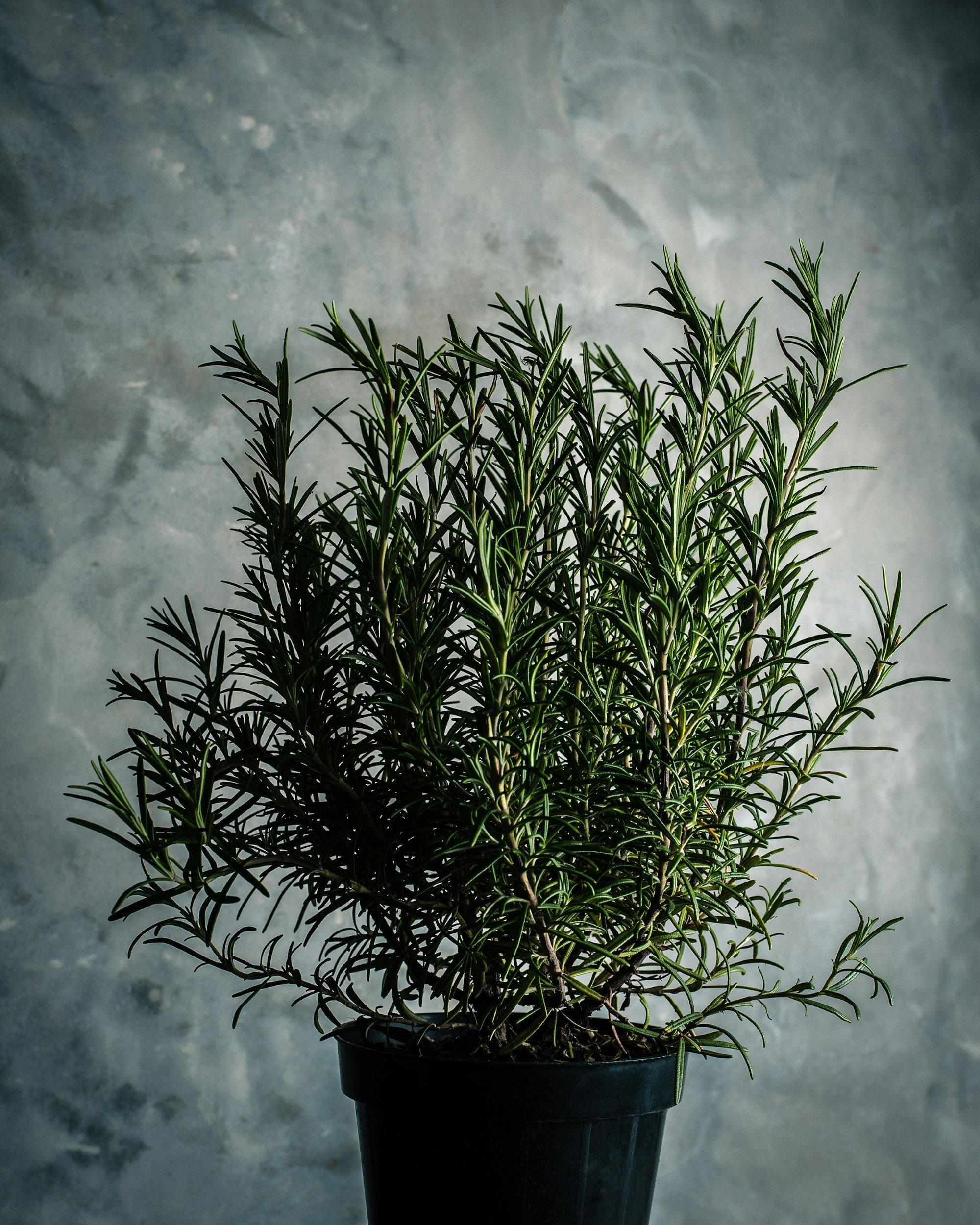
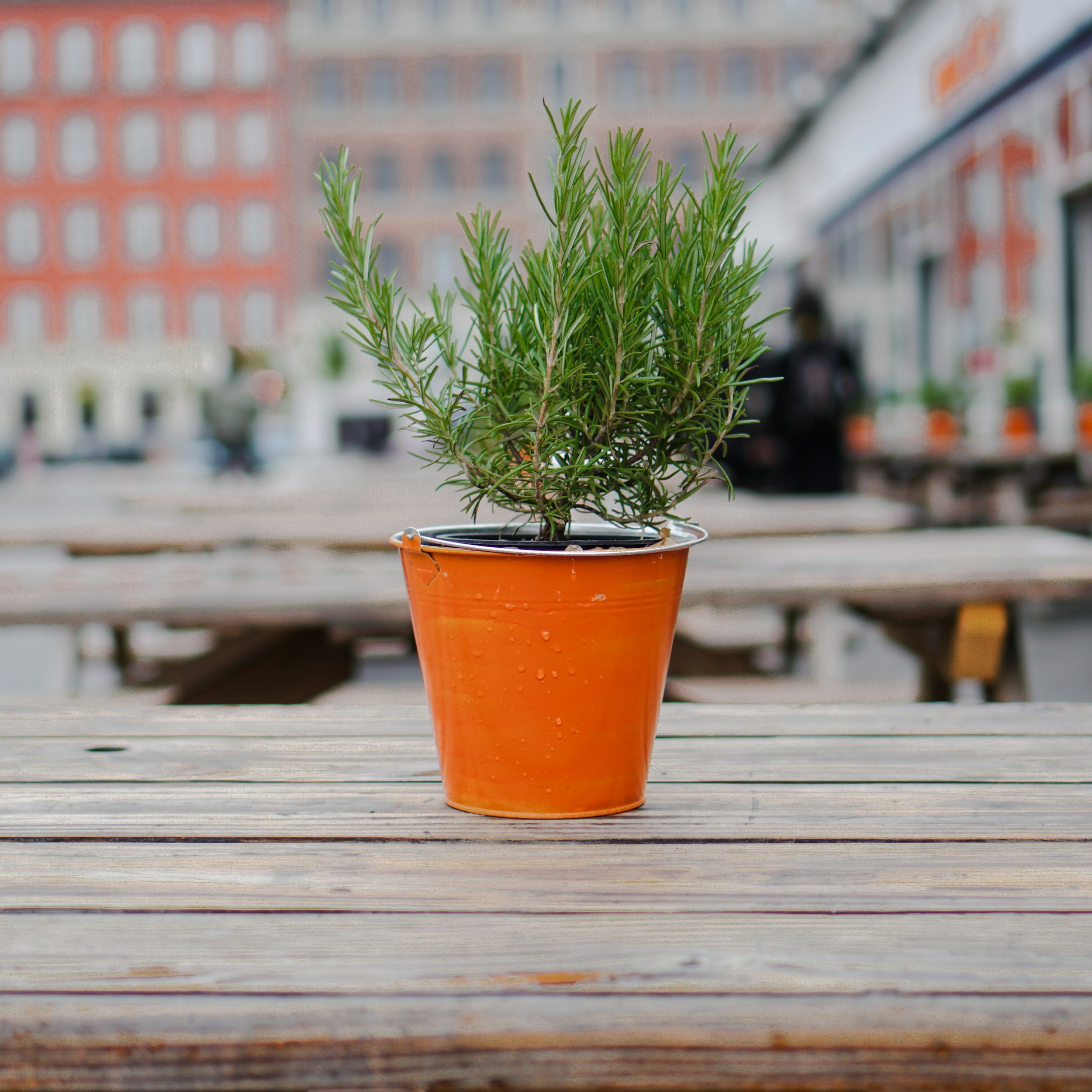
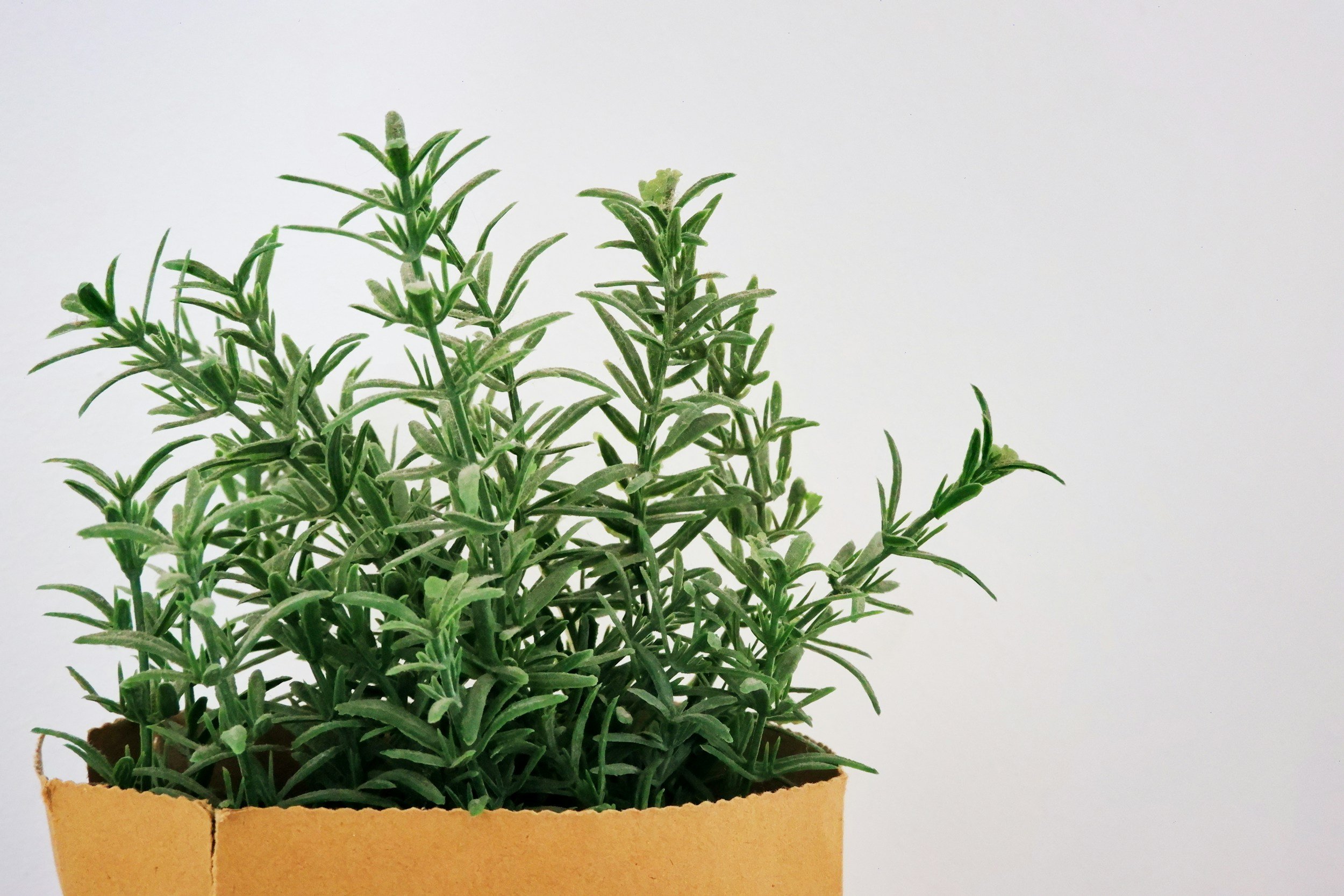
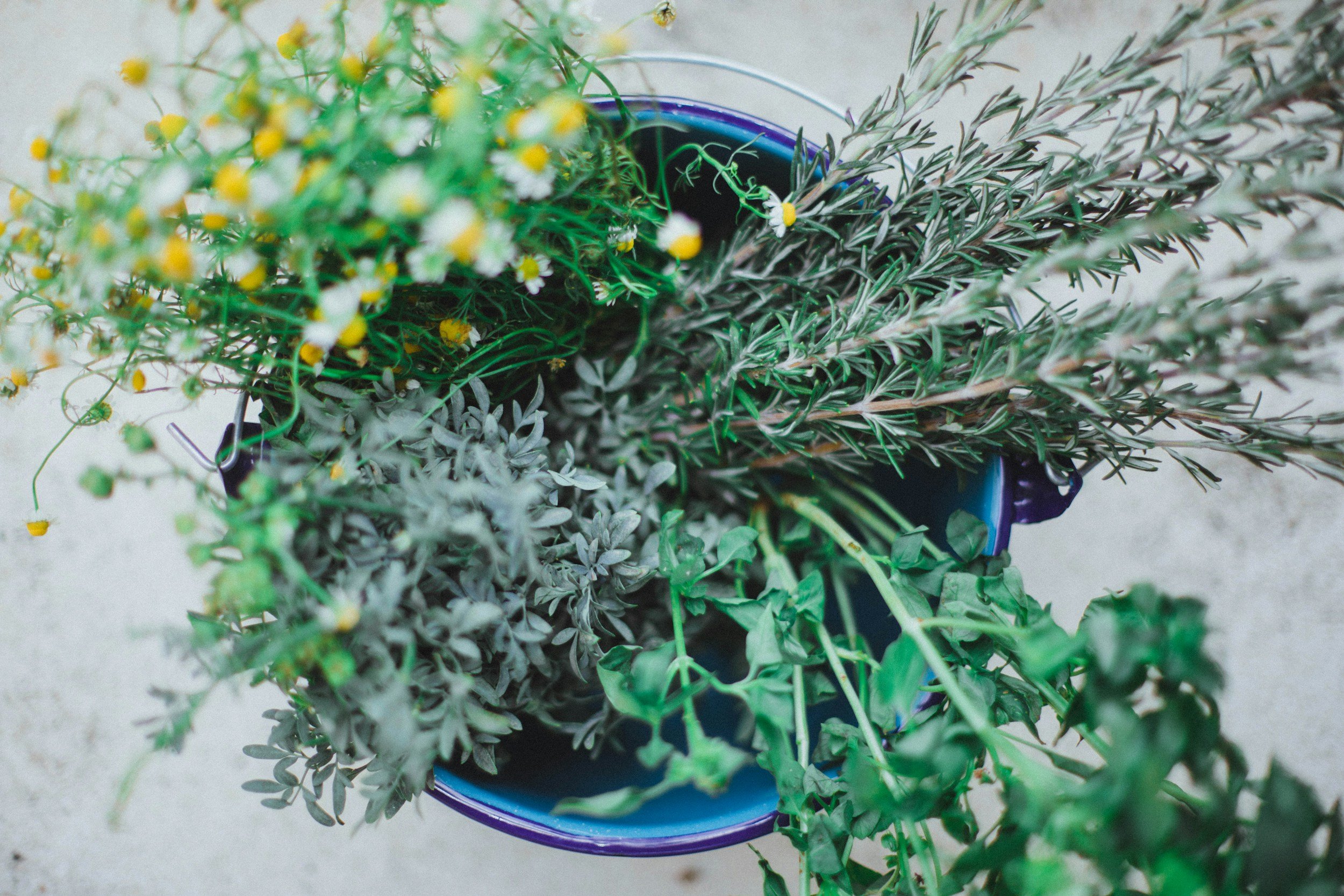
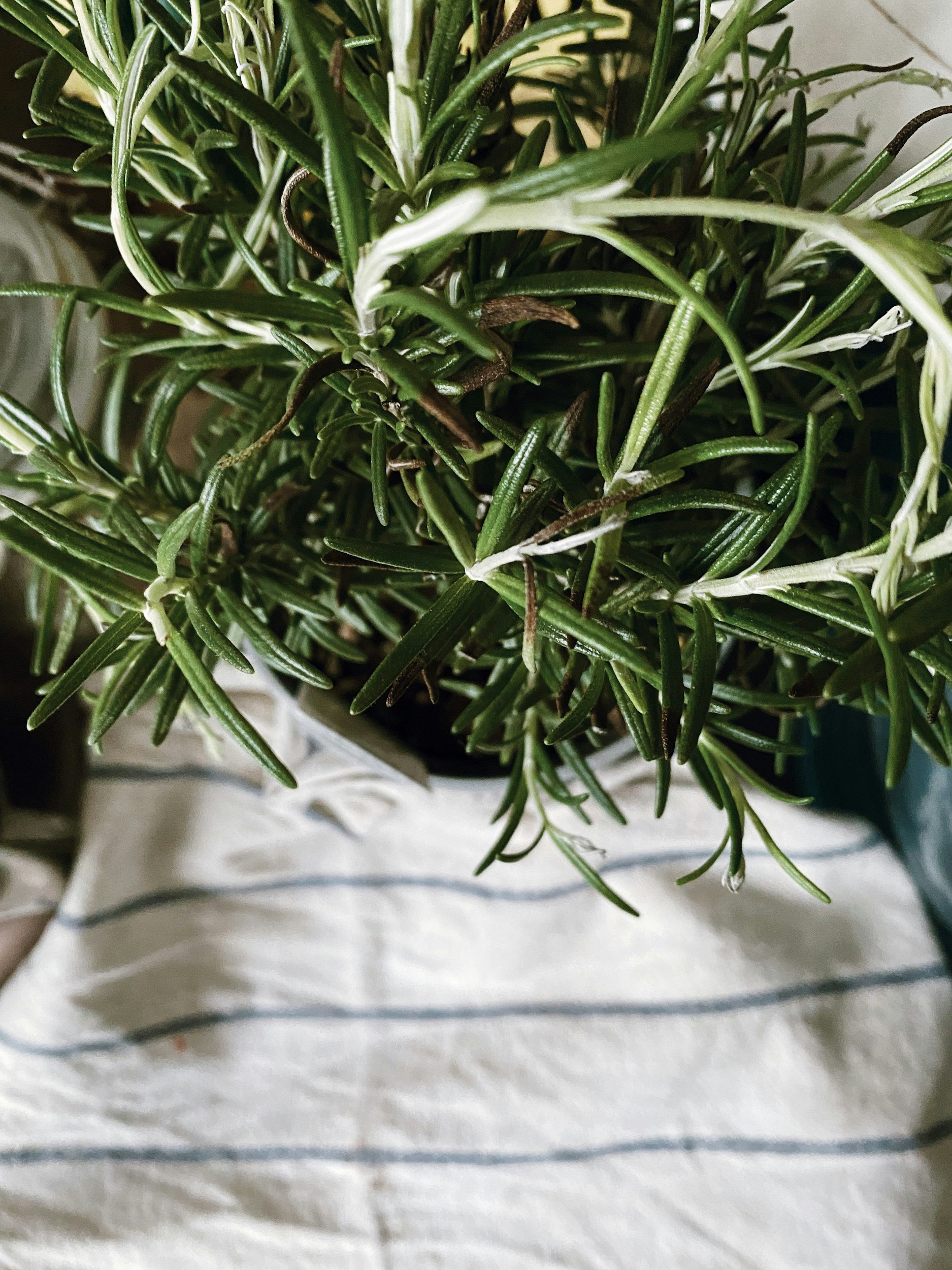
Sources
Bartram, T. (1998). Bartram’s Encyclopedia of Herbal Medicine. Constable.
Fisher, C. (2009). Materia Medica of Western Herbs, (2018 edition). Finchley Road, London. Aeon Books.
Hedley, C & Shaw, N. (2020). A herbal book of making and taking. Finchley Road, London. Aeon Books.
Hoffmann, D. (2003). Medical Herbalism: The Science and Practice of Herbal Medicine. Healing Arts Press.
McIntyre, A. (2019). The complete herbal tutor, revised and expanded edition. Finchley Road, London. Aeon Books.
Plants of the World Online | Kew Science. (n.d.). Plants of the World Online. https://powo.science.kew.org/
Disclaimer: This page is for educational purposes only. Consult a qualified medical herbalist before using herbs, especially during pregnancy, when trying to conceive, while breastfeeding, for medical conditions, or with children.
Read the full disclaimer → Medical Disclaimer.




